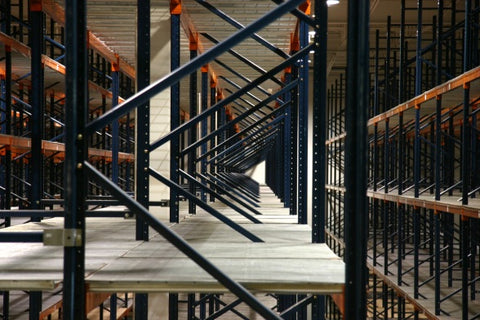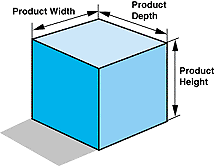
Shelving Units
Aid Equipment provides economical shelving for light and heavy loads,as well as work benches and shop desks. Also, we offer heavier capacities and deeper shelves than standard shelving which can make it an ideal for all your large storage needs. A shelving unit can take on many different forms, but some are universal. Most shelving consist basically of cold-rolled steel frames and beams that are easy and quick to install. All of Aid Equipment's shelving is very sturdy and economical.
Some useful information to maximize your available space
- Determine overall width of shelving area. This is the amount of side-to-side space you wish to store product in.
-
 Measure the width, depth and height of product being stored.
Measure the width, depth and height of product being stored.
- Determine the weight of product to be stored, and the number of products to be stored per shelf.
- Determine the width, or left-to-right dimension of the individual shelf units needed. Standard rivet shelving units are 12", 15", 18", 24", 30", 36", 42", 48", 60", 69", 72", 84", and 96" wide. Choose the size that best fits your product. Note that each individual unit in a line of shelving unit adds from 1/2" to 3/4" to the actual width. You begin a row of shelves with a starter unit, and attach adder units to extend.
- Determine the shelf depth. This is the front-to-back dimension. Choose the size that best fits your product depth. Standard depths are 12", 15", 18", 24", 30", 36", 42", and 48" for rivet shelving.
- Determine the weight each shelf will need to bear based on the weight of stored product and number of products per shelf. This will help determine whether you will need a single rivet or double rivet beam. Capacities vary from 250 lbs. to 1,850 lbs. for each shelf. Note that this capacity is based upon evenly distributed loads and reflects the capacity of the steel structure only.
- Determine the required decking material. This is based on the capacity needed per shelf level. Typically, Particle Board shelves are used. but for some higher capacity applications, you may want other kinds of decking. For assistance please contact us.
- Determine height of shelving needed. Some factors that may help determine this are: Ceiling height and number of shelf openings required. Shelf openings are the space between shelf levels. For example, a seven shelf unit will have six openings. To determine your shelf opening size, you should consider your product height. Standard rivet shelving heights are: 72", 84", 96", and 120".
- Consider your options. This guide reflects rivet shelving, but there are other types of shelving. For many applications you can utilize Steel Shelving, Rivet Shelving, or Wire Shelving. For advice on shelving sizes, configurations and sizes, feel free to email us at sales@aideq.com.


